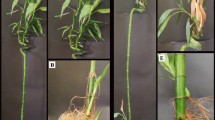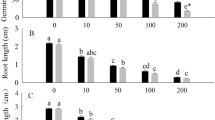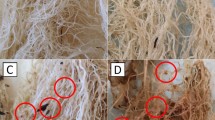Abstract
The demand for pyrethrum (Chrysanthemum cinerariifolium) resulted in a greatly increased production of this profitable crop in Kenya during the War. It has been cultivated commercially in Kenya since 1928. From 1,864 tons in 1938, the yield rose to 7,409 tons from 52,837 acres in 1945. This acreage is concentrated in a few areas in the Highlands, most of it at an altitude between 6,000 ft. and 9,000 ft. Minor losses, due to root and crown rot, are of common occurrence, but until 1946 the crop had escaped any serious disease in spite of the continuous and intensive cultivation to which it has been subjected.
This is a preview of subscription content, access via your institution
Access options
Subscribe to this journal
Receive 51 print issues and online access
$199.00 per year
only $3.90 per issue
Buy this article
- Purchase on Springer Link
- Instant access to full article PDF
Prices may be subject to local taxes which are calculated during checkout
Similar content being viewed by others
References
Det. Imperial Mycological Institute.
Voglino, P., L'avvizimento fogliare della Margherita bianca.âLa Difesa delle Piante, VI, 3, 1 (1929) (extract R.A.M. VIII, 723).
Oyler, Enid, Plant Diseases, Rep. Exp. Res. Sta. Cheshunt (1937) (extract R.A.M. XVII, 583).
Author information
Authors and Affiliations
Rights and permissions
About this article
Cite this article
NATTRASS, R. A Disease of Pyrethrum in Kenya. Nature 160, 120–121 (1947). https://doi.org/10.1038/160120c0
Issue Date:
DOI: https://doi.org/10.1038/160120c0
This article is cited by
Comments
By submitting a comment you agree to abide by our Terms and Community Guidelines. If you find something abusive or that does not comply with our terms or guidelines please flag it as inappropriate.



